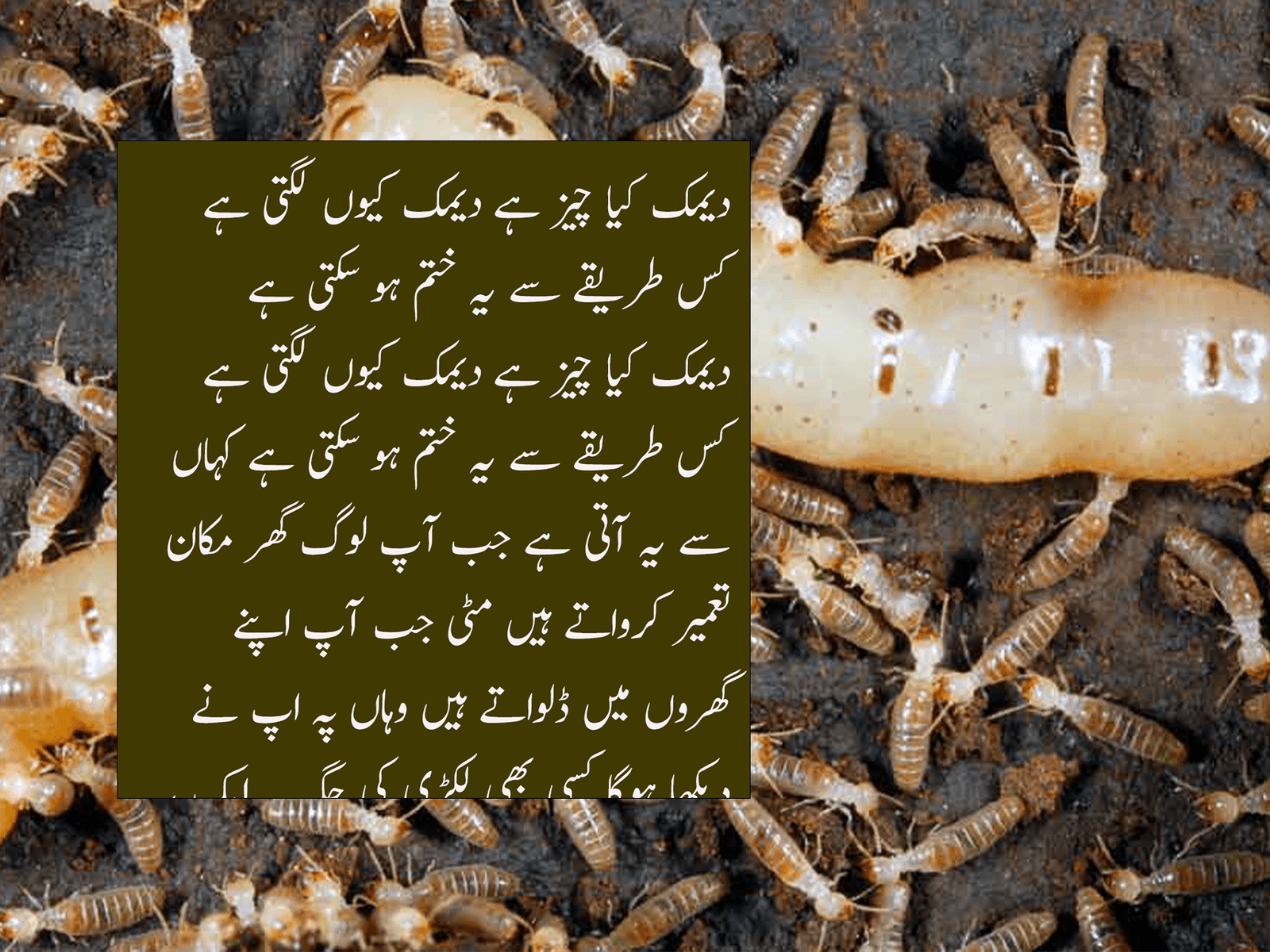Unmasking Termites Understanding, Prevention, and Elimination
Termites, often referred to as “silent destroyers,” are small insects that feed on wood and can cause significant damage to structures if left unchecked. These insects play a vital role in breaking down dead plant material in nature, but when they appear in homes or other structures, they can become a serious nuisance. Let’s delve into what termites are, why they appear, and how they can be eliminated:
What Are Termites
Termites are small, social insects that belong to the order Isoptera. They live in colonies and are divided into different castes, including workers, soldiers, and reproductive individuals (kings and queens).
Why Do Termites Appear
Termites primarily appear due to their search for food and suitable nesting environments. They are attracted to wood and cellulose materials found in structures, including homes, furniture, and other wooden items.
دیمک کیا چیز ہے دیمک کیوں لگتی ہے کس طریقے سے یہ ختم ہو سکتی ہے
دیمک کیا چیز ہے دیمک کیوں لگتی ہے کس طریقے سے یہ ختم ہو سکتی ہے کہاں سے یہ اتی ہے جب اپ لوگ گھر مکان تعمیر کرواتے ہیں مٹی جب اپ اپنے گھروں میں ڈلواتے ہیں وہاں پہ اپ نے دیکھا ہوگا کسی بھی لکڑی کی جگہ پہ ایک یہ لیئر تھی اس طریقے سے بناتی چلی جاتی ہے اور جب اپ کچھ عرصے کے بعد اپ کو پتہ چلتا ہے کہ اس کو تو دیمک لگ گئی تو یہ لکڑی خراب ہو گئی ہم
سپرے بنانے کا طریقہ
سپرے تیار کریں گے کوشش یہ کرنی ہے اپ نے یہ چیزیں اپ نے استعمال کرنی ہیں جو اپ کے کھانے پینے والی برتن وغیرہ نہ ہو پہلے لیں گے تمباکو اس کے اندر ہم پانی شامل کر دیتے ہیں رات بھر کے لیے کسی برتن میں تمباکو کو چھوڑ دینا ہے گے صبح ہونے کے بعد اپ نے اس کو چھان لینا ہے اس پانی کو اس طریقے سے کوئی مسئلہ نہیں ہے پانی چھاننے کے بعد اس کو سائیڈ پہ کر دیں گے اور اس میں مٹی کا تیل ڈال دیں گے تین سے چار دن یہ عمل کریں دن میں ایک بار کرنا ہے تین دن میں ختم ہو جائے گا
Types of Termites
Common types of termites include subterranean termites, dry wood termites, and damp wood termites. Each type has specific habits and habitats.
Damage Caused by Termites
Termites feed on wood, causing structural damage that can be financially devastating if left untreated. They work silently and can go undetected for a long time, causing significant harm.
Signs of Termite Infestation
Common signs include mud tubes on walls, hollow-sounding wood, discarded wings, and wood that appears blistered or damaged.
Prevention Tips
- Reduce Moisture: Termites thrive in damp environments, so fix leaky pipes and ensure proper ventilation.
- Eliminate Wood-to-Ground Contact: Avoid direct wood-to-ground contact, as it provides easy access for termites.
- Regular Inspections: Regularly inspect wooden structures, furniture, and the perimeter of your property.
- Remove Debris: Clear away wood debris and mulch from near your home’s foundation.
- Seal Entry Points: Seal cracks and crevices in your home’s foundation and walls.
Elimination Methods
- Professional Pest Control: Consult with a professional pest control company to assess the extent of the infestation and recommend suitable treatments.
- Liquid Termiticides: Chemical treatments can be applied to soil around structures to create a barrier against termites.
- Termite Baits: These are placed around the property and contain substances that termites carry back to the colony, affecting other members.
- Fumigation: For severe infestations, fumigation may be necessary to eliminate termites from the entire structure.
DIY Prevention
- Cardboard Trap: Place wet cardboard near termite-affected areas. Termites will gather on the cardboard, which can then be removed and discarded.
- Sunlight Exposure: Exposing infested wood to direct sunlight can help kill termites.
Conclusion
Termites are a significant threat to structures made of wood, and their presence should not be taken lightly. Early detection, prevention measures, and professional pest control are essential in managing termite infestations and protecting your property. Regular inspections and proactive steps can go a long way in avoiding the damage caused by these silent destroyers.





